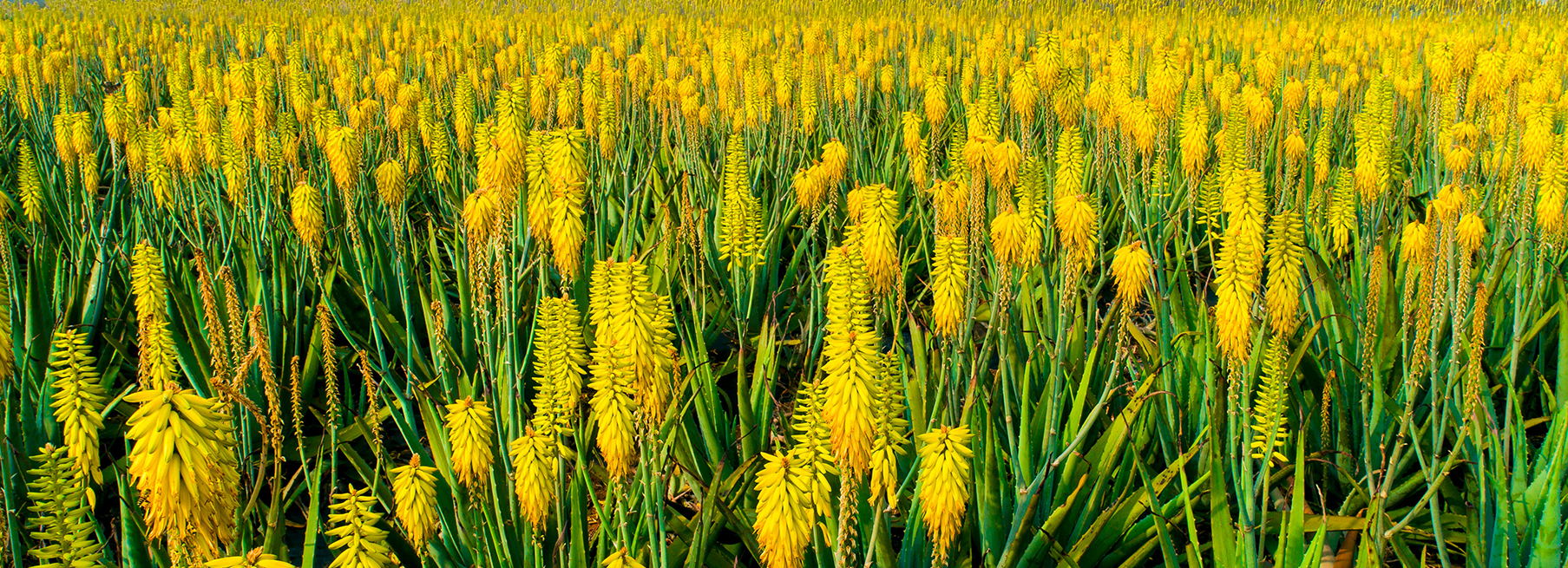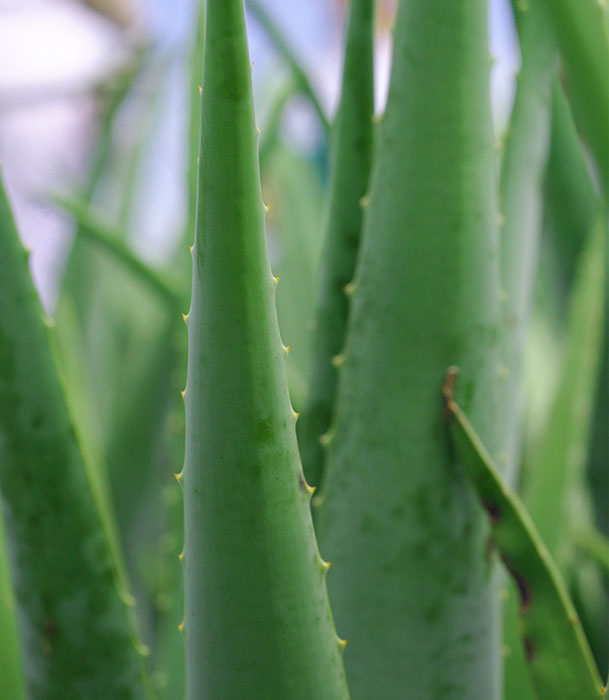


Curacao Aloe, also known as American Aloe or Green Leaf Aloe, is a plant with homologous uses in medicine, food, and cosmetics. It possesses the highest medicinal value and enjoys the reputation of "beautician" in the plant kingdom. In the United States, it is called "family doctor" and "treasure chest". It is the most suitable aloe leaf for direct beauty care. In 2008, it was designated by the Ministry of Health as the aloe variety for new resource foods.

Water plays a key role in diluting and dissolving skincare ingredients, aiding their absorption by the skin. Water is also the cheapest ingredient in cosmetics, leading most brands to prioritize it as the primary component. Many skincare products use water types such as deionized water, mineral water, or glacial water—all of which are exogenous , not fully homologous to human tissue fluids. After passing through the skin's epidermal barrier via multiple "filtration" layers, only a limited amount of such water (and the ingredients dissolved in it) can be effectively absorbed.
In fresh Aloe Vera leaves, water accounts for approximately 95% of their total weight. This water is a natural, biologically active water, also known as "slippery water" , which holds significant value in cosmetics, healthcare, and medicine. Studies reveal that "slippery water" differs fundamentally from exogenous water: it exhibits ultra-low viscosity and flows twice as fast along pipe walls compared to exogenous water. This unique property of accelerated flow rate enhances the delivery and rapid absorption of aloe polysaccharides from fresh aloe leaves into the human body, promoting cellular proliferation.

The difference between fresh Aloe juice and freeze-dried Aloe powder is similar to that between breast milk and milk powder. Production of fresh organic Aloe juice: AGHG's proprietary SATT Aloe Vera processing technology has been perfected by AGHG as the natural way to maintain and preserve the active nutrients found in Aloe and produces the highest quality Aloe products with 12 hours of harvest.The patent number of SATT technology is ZL 2009 1 0041944.2. Production of freeze-dried Aloe powder : In the traditional production process of Aloe, enzymes are first used to degrade the polysaccharides in Aloe, and then activated carbon is used to adsorb aloin in Aloe. While filtering out macromolecules, it will also filter out the most nutritious components such as aloe polysaccharides. Then, the filtered Aloe juice is concentrated at high temperature and freeze-dried to become Aloe powder. Some of the nutrients in Aloe, such as water-soluble vitamins, minerals, and amino acids, will be lost along with the evaporation of water.
Check the ingredient list. According to China's cosmetics regulations, all ingredients must be clearly indicated on the packaging. Ingredients of over 0.1% should be listed in descending order. That is to say, the higher percentage of an ingredient, the higher its ranking on the list. In most Aloe products on the market, the primary ingredient in the ingredient list is "water". There are also a small number of Aloe products where the primary ingredient in the ingredient list is labeled as "Aloe barbadensis extract", and at the same time, descriptions like "98%" or "92%" are marked. In fact, it means that Aloe + water = 98%, and the actual content of Aloe is only a fraction of a percentage. This is used to mislead and deceive consumers.
The aloe flower has a short blooming period and is harvested only once a year, making the raw material exceptionally precious.
√ During the blooming period from March to April, the limited Aloe flowers are carefully handpicked.
√ After thorough cleaning and selection, they undergo prompt stabilization treatment and freeze-drying to preserve their integrity.
√ The processed Aloe flower raw material is stored in a specific temperature- and humidity-controlled environment to maintain stability.
√ AGHG’s proprietary technology is used to extract, separate, and purify the active nutrients from the Aloe flowers.
Aloe flowers are rich in vitamins, amino acids, proteins, carbohydrates, organic acids, fatty acids, volatile compounds(evaporative bioactive molecules),
carotenoids, phenolic compounds, and other bioactive nutrients.
Key Active Components:
Aloe Polysaccharides: The polysaccharides content in Aloe flowers is 8-10 times higher than in Aloe leaves, offering superior bioactive potency.
Vitamin C: Aloe flowers contain 3-6 times more vitamin C compared to Aloe leaves.
Benefits:
- Neutralizes free radicals and combats oxidative stress.
- Defense against aging and reduces inflammation/allergic responses.
- Repairs cellular damage and brightens skin tone by reducing pigmentation.
High-Performance Anti-Wrinkle & Firming Action:
- Targets Core Aging Signs: Dryness, wrinkles, sagging, and loss of firmness.
- Intrinsic Rejuvenation: Stimulates collagen production to tighten and lift.
-Extrinsic Defense: Smoothes fine lines, protects skin barrier, and enhances elasticity for a plumped complexion.
Aloe Flower Essence Gel
Rapid Penetration & Absorption
√ Aloe Bio-Active Water with 3x faster penetration rate
√ Enhanced by 24K gold to further boost absorption
√ Maximizes delivery and absorption of active ingredients
Aloe Flower Hair Care
√ Restores and revitalizes a healthy scalp to promote hair growth
√ Repairs damaged hair from root to tips ; Strengthen hair from the inside out
√ Restores optimal scalp health for stronger, resilient hair
Aloe Flower Age Defying Skincare
√ Firm and lift from the inside out
√ Active ingredients are deep and fast penetrating
√ Embrace youthful beauty with floral inspired skincare
Repairs Sun-Damaged Skin:
Aloe polysaccharides and bioactive enzymes actively repair damaged skin, reduce inflammation, and alleviate post-sun discomfort like redness and pain.
Deep Hydration:
Replenishes moisture lost due to sun exposure, restoring skin's suppleness.
UV Protection & Antioxidant Defense:
The anthraquinone compounds in Aloe can shield and absorb ultraviolet rays, effectively scavenge the free radicals, reduce skin damage and photoaging, and slow down the formation of sunspots.